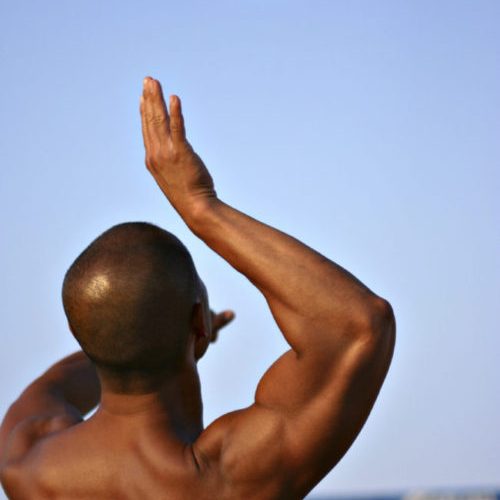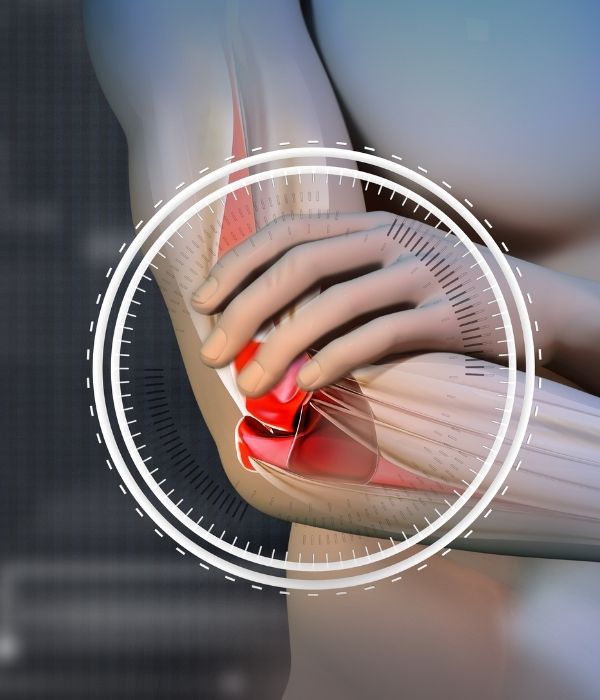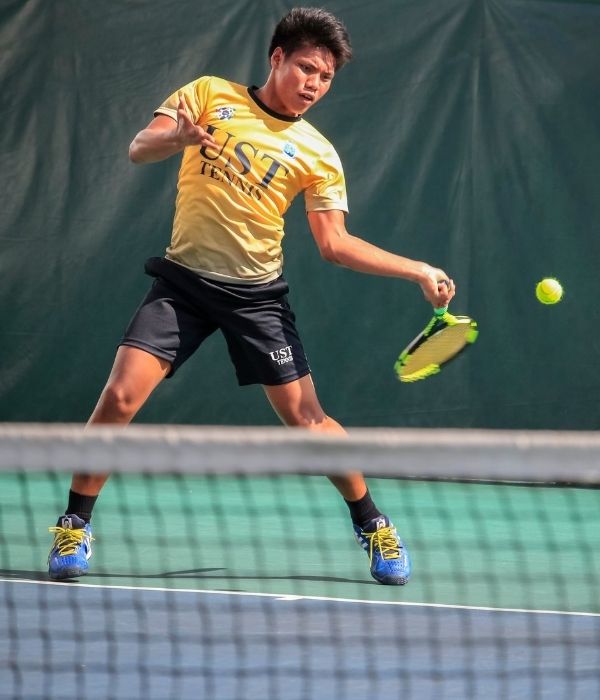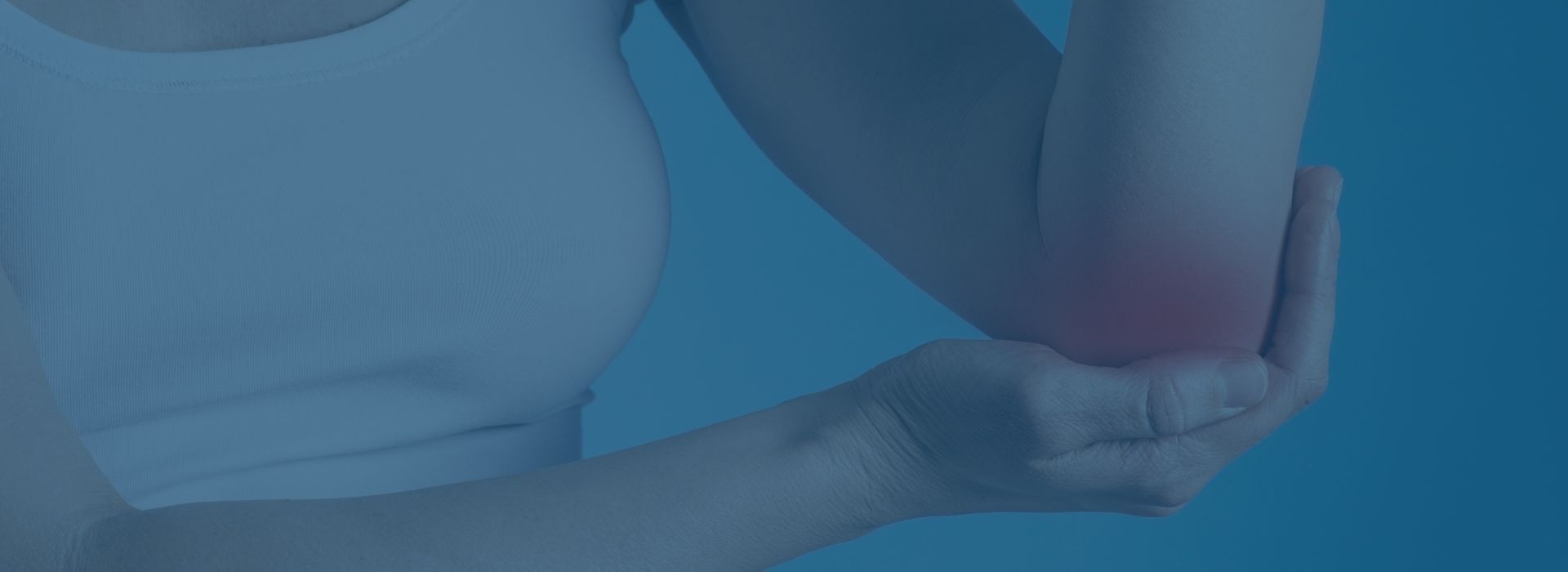The Mystery of the Painful Elbow
There are few things more frustrating than a painful elbow. In cases where it undergoes high functional demands and is predisposed to constant loading, injury to the elbow is highly likely.
Generally speaking, elbow injuries are most likely in the sporting population (especially golfers, weight lifters or in those that play high intensity racquet sports).
However, overuse injuries of the elbow are also common in occupations involving repetitive gripping and wrist movements, particularly in the middle aged.

Anatomy of the elbow
The elbow is comprised of three bones, the humerus (the long bone of the arm), the radius and the ulna (the two bones in the forearm). The three bones articulate at three joints: the humero-radial, humero-ulnar and radio-ulnar joints.
The synovial joints involving the humerus act as a hinges functioning to bend and straighten the elbow while the radio-ulnar joint is a ‘pivot’ joint allowing rotational movement at the forearm (in other words, palms up or down).
The joints are stabilised further by the radial and ulnar collateral ligaments (which run on either side of the joint) and the annular ligament (a ring like ligament which wraps around the radius and attaches at the ulna).
Three other anatomical structures exist within the elbow; namely the subcutaneous, intra- tendinous and subtendinous olecranon bursa. The bursae are fluid-filled sacs which serve to reduce friction and allow joint gliding to facilitate movement.
Elbow pain can be divided into acute injuries and overuse injuries. The most common overuse injuries that physiotherapy encounters in clinic include tennis elbow (lateral epicondylalgia), golfer’s elbow (medial epicondylalgia) and olecranon bursitis.


Tennis Elbow (lateral epicondylalgia)
Is an irritation of the lateral condyle (the bony protrusion on the outside of the humerus) which is aggravated by resistance of wrist extension.
Tennis elbow is also commonly associated with a decrease in grip strength. The condition is well known for being difficult to treat with expected recovery times ranging from 6 months to a year.
Treatment options of Tennis Elbow
The general consensus in the treatment of lateral epicondylalgia is that conservative management is trialled for 3-6 months within which the majority of cases recover in this time. Those that find no benefit from conservative management may undergo operative treatment.
Conservative treatment options for lateral epicondylalgia include manual therapy (despite the fact that the condition is soft tissue in nature. Joint manipulation has shown to be beneficial for short term pain relief).
Forearm strengthening exercises to prevent further de-conditioning of the forearm and gentle stretching to help desensitize the affected soft tissues and maintain range of motion.
Taping and bracing of the elbow has also shown clinical benefit by reducing pain with gripping activities and decreasing night pain. There is also some evidence that acupuncture may be of benefit in treating epicondylalgia.
The use of corticosteroid injections have also been well documented in the management of lateral epicondylalgia. However, it appears that there is a greater chance of recurrence with the use of these injections with one study reporting a 72% recurrence in the population that underwent steroidal treatment.
Golfer’s Elbow (medial epicondylalgia)
Is caused by irritation of the medial condyle (the bony protrusion on the inside of the humerus). The irritation occurs on the attachment of the flexor/pronator tendons and pain is reproduced with resisting these movements.
Treatment options of Golfer’s Elbow
Treatment of medial epicondylalgia is usually conservative to begin with. Several studies have investigated the effects of eccentric exercise on medial epicondylalgia, concluding that this form of exercise results in decreased pain levels and improved functionality of the elbow.
Other physiotherapy treatments are similar to those used for the treatment of lateral epicondylalgia, however, there is considerably less conclusive and up to date research on the management of medial epicondylalgia.
Elbow’s while challenging to treat, often recover well with conservative management provided that occupational or sporting factors do not impede recovery. The majority of GPs refer patients complaining of elbow pain to a physiotherapist for rehabilitation and prescribe anti-inflammatory or pain medication as required.
The most important goal in the rehabilitation of the elbow is to re-gain functionality.
In severe cases of elbow pain, the patient may be hesitant to move the affected or adjacent joints. The atrophy of musculature that results from such guarded behaviour can nudge the issue along a path to chronicity; a burden for the patient and a laborious task for the managing health professional.

Stop suffer through elbow pain, our experienced Physiotherapist can help get back on track! Located in North, Brisbane. Book an appointment online or call us today on 07 3352 5116.

